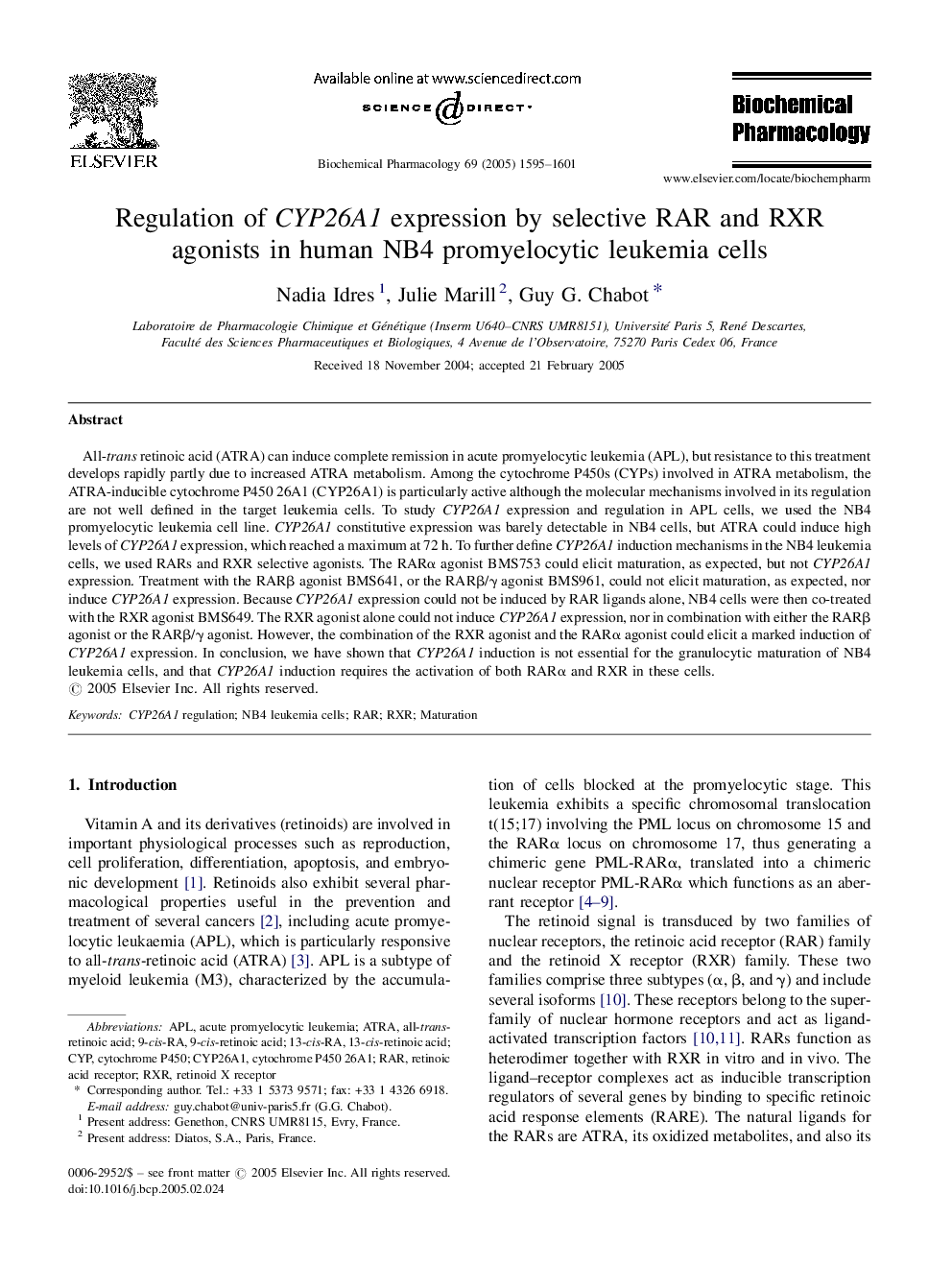| Article ID | Journal | Published Year | Pages | File Type |
|---|---|---|---|---|
| 9002073 | Biochemical Pharmacology | 2005 | 7 Pages |
Abstract
All-trans retinoic acid (ATRA) can induce complete remission in acute promyelocytic leukemia (APL), but resistance to this treatment develops rapidly partly due to increased ATRA metabolism. Among the cytochrome P450s (CYPs) involved in ATRA metabolism, the ATRA-inducible cytochrome P450 26A1 (CYP26A1) is particularly active although the molecular mechanisms involved in its regulation are not well defined in the target leukemia cells. To study CYP26A1 expression and regulation in APL cells, we used the NB4 promyelocytic leukemia cell line. CYP26A1 constitutive expression was barely detectable in NB4 cells, but ATRA could induce high levels of CYP26A1 expression, which reached a maximum at 72 h. To further define CYP26A1 induction mechanisms in the NB4 leukemia cells, we used RARs and RXR selective agonists. The RARα agonist BMS753 could elicit maturation, as expected, but not CYP26A1 expression. Treatment with the RARβ agonist BMS641, or the RARβ/γ agonist BMS961, could not elicit maturation, as expected, nor induce CYP26A1 expression. Because CYP26A1 expression could not be induced by RAR ligands alone, NB4 cells were then co-treated with the RXR agonist BMS649. The RXR agonist alone could not induce CYP26A1 expression, nor in combination with either the RARβ agonist or the RARβ/γ agonist. However, the combination of the RXR agonist and the RARα agonist could elicit a marked induction of CYP26A1 expression. In conclusion, we have shown that CYP26A1 induction is not essential for the granulocytic maturation of NB4 leukemia cells, and that CYP26A1 induction requires the activation of both RARα and RXR in these cells.
Keywords
Related Topics
Health Sciences
Pharmacology, Toxicology and Pharmaceutical Science
Pharmacology
Authors
Nadia Idres, Julie Marill, Guy G. Chabot,
